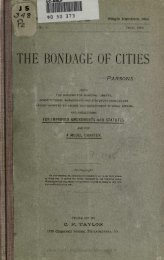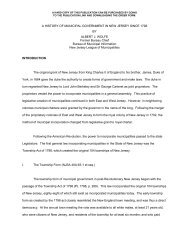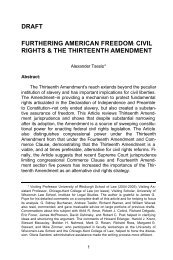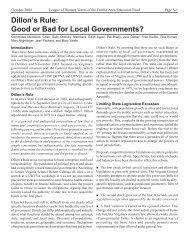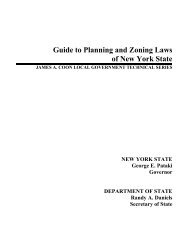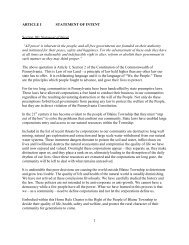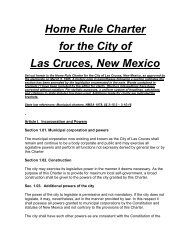The British Empire and Famine in Late 19th Century Central India
The British Empire and Famine in Late 19th Century Central India
The British Empire and Famine in Late 19th Century Central India
Create successful ePaper yourself
Turn your PDF publications into a flip-book with our unique Google optimized e-Paper software.
1900. 7 Amartya Sen <strong>and</strong> Jean Dreze <strong>in</strong> their study have suggested that the reasons why<br />
fam<strong>in</strong>es suddenly seized with the end of <strong>British</strong> <strong>Empire</strong> (post-1947) was not so much<br />
because the nationalist government was more benevolent but because the free press <strong>and</strong><br />
public op<strong>in</strong>ion put constant pressure on the government to respond. This k<strong>in</strong>d of pressure<br />
could not be exerted under conditions of colonial subjection. 8<br />
An Exam<strong>in</strong>ation <strong>in</strong>to the Nature <strong>and</strong> Causes of <strong>Fam<strong>in</strong>e</strong>s:<br />
<strong>The</strong> scholars of ancient <strong>and</strong> medieval <strong>India</strong> like H.D. Sankhalia, D.D. Kosambi,<br />
Romila Thapar, D. N. Jha, R.S. Sharma, Irfan Habib <strong>and</strong> others have observed that the<br />
South Asian society had always been shaped <strong>and</strong> reshaped by a close <strong>in</strong>teraction between<br />
pastoral nomads, agriculturists, <strong>and</strong> forest dwellers. 9<br />
Sumit Guha <strong>in</strong> his recent book has<br />
further elaborated this observation by stat<strong>in</strong>g that the boundary between the three<br />
environmental regions, i.e., forests, graz<strong>in</strong>g grounds, <strong>and</strong> cultivated fields had always<br />
been fluid before the advent of <strong>British</strong> rule.<br />
And this fluidity also extended to<br />
occupational flexibility whereby people acquired skills <strong>in</strong> accordance with the political<br />
economy <strong>and</strong> social culture of the times. 10<br />
However, this fluidity <strong>and</strong> flexibility<br />
threatened the colonial state‟s greed for revenues <strong>and</strong> desire for territorial expansion. <strong>The</strong><br />
fluid boundaries had to be frozen <strong>and</strong> occupational flexibility had to be put <strong>in</strong>to the<br />
straightjacket category of caste for better control <strong>and</strong> management of the empire <strong>and</strong> its<br />
subjects. 11<br />
So the first order of bus<strong>in</strong>ess for the colonial state was to conduct extensive l<strong>and</strong><br />
survey <strong>and</strong> settlement operations while the process of empire build<strong>in</strong>g was <strong>in</strong> progress<br />
dur<strong>in</strong>g the n<strong>in</strong>eteenth century. 12<br />
<strong>The</strong> follow<strong>in</strong>g table shows the movement of cultivated<br />
3






